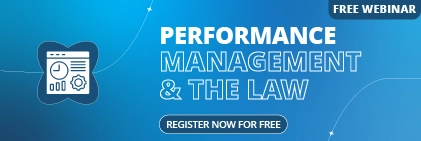Acquiring and maintaining a skilled workforce is a demanding task for businesses across the globe. Especially after the introduction of a large-scale remote working environment in the aftermath of the pandemic, organisations have been struggling to keep up with the demands of human resource management functions. It’s about time the manual HR management gave way to automation.
The digital workforce can be managed better with the robust workflows of advanced human resource management system platforms. They bring more to the table than meets the eyes of an outsider. HR personnel, employees, managers, and decision-makers can all benefit from the agile HR management systems.
Let’s explore the reasons why every organisation must have an HRMS in place.
10 Reasons to Use A Human Resource Management System
1. Doing more with less
Unlike traditional HR management systems that take up much of the invaluable work hours, HRMS can enable your employees to do more tasks in less time. Tasks such as employee record keeping, report generation, audit scheduling, setting reminders, etc., can all be managed efficiently along while saving time with the right HRMS in place. HR personnel are spared more time to focus on strategic tasks rather than doing laborious work.
2. Manage digital workforce
Since much of the workforce is scattered when working remotely and personal visits are limited due to social distancing, keeping in touch with every employee is a difficulty. HRMS can serve as a medium of communication between employees and HR personnel. It helps stay connected through virtual events, reminders, data sharing, and individual or group chats.
3. Centralisation of data
Along with being the mode of communication, HRMS also helps the scattered workforces to upload, access, and manage data at their convenience. This is made possible through the synthesis of data in a central repository which can be accessed by authorised users from their devices. An employee updating their qualification details can be viewed by HR managers anytime. This helps maintain data integrity throughout the organisation.
4. Enhance productivity through education
HRMS software incorporates employee learning and education modules to help employees learn new skills related to their job roles. A well-informed and trained employee will be motivated to perform better with the gained skills. Saving time doing mundane things on the HR personnel’s part also welcomes improved productivity.
5. Re-invent the HR
Instead of spending hours inside offices managing endless transactions and files, HR personnel are now empowered to re-invent human resource management. An HRMS allows a comprehensive upheaval in the way data is stored, employees learn and engage, compliance is managed, workplace policies are designed, and a lot more.
6. Data analysis and reporting
Only enabling employee self-service for record management and allowing users to enter data easily into software does not add value to the business. An HRMS platform also encompasses rigorous data analysis procedures and advanced reporting for HR compliance and decision-making. The top management is always armed with valuable insights from the HRMS data analysis. This also helps in KPI monitoring.
7. Performance evaluation and surveys
Another way to ensure higher productivity of employees is through performance evaluation and management. HRMS simplifies this process by providing HR personnel and managers with the tools to measure and analyse employee performance at regular intervals. 360 feedback and surveys help employees voice their concerns and the management to employ more effective ways to empower employees.
8. Employee retention
Employees who feel guided, empowered, challenged, and valued are likely to stay and work towards achieving the business goals. This is a profitable situation for both the organisation and employees and guarantees mutual growth. It can be anticipated with the introduction of the right HRMS in a business.
9. Cost-effectiveness
Reduction of paperwork, large spaces to allocate to innumerable files, saved work hours, simplified procedures, hassle-free employee recruitment and onboarding, employee retention, easy data processing, and so on add up to the cost-effectiveness of HRMS software. Despite the initial costs of investment, they prove more beneficial in the long run and provide increased returns. HRMS also facilitates support for organisation growth.
10. Compliance management
HR compliance is an integral function of every business and only managing human resources efficiently will not guarantee immunity from non-compliance risks and costs. An all-encompassing HRMS also includes workflows that allow users to record, access, and report all compliance procedures adopted by the organisation. This helps businesses stay updated and compliant with the compliance regulations that apply to their industry and reduces the likelihood of having to face expensive lawsuits.
The bottom line:
All these advantages of well-designed human resource management software help improve the HR function and deploy better strategies in the business. It helps HR personnel who were previously bogged down in handling the minute details of the manual HR management process. Deploying and using HRMS is a win-win for the business and the workforce.
To introduce an efficient and enhanced human resource management mechanism in your organisation, contact Sentrient HR today.





